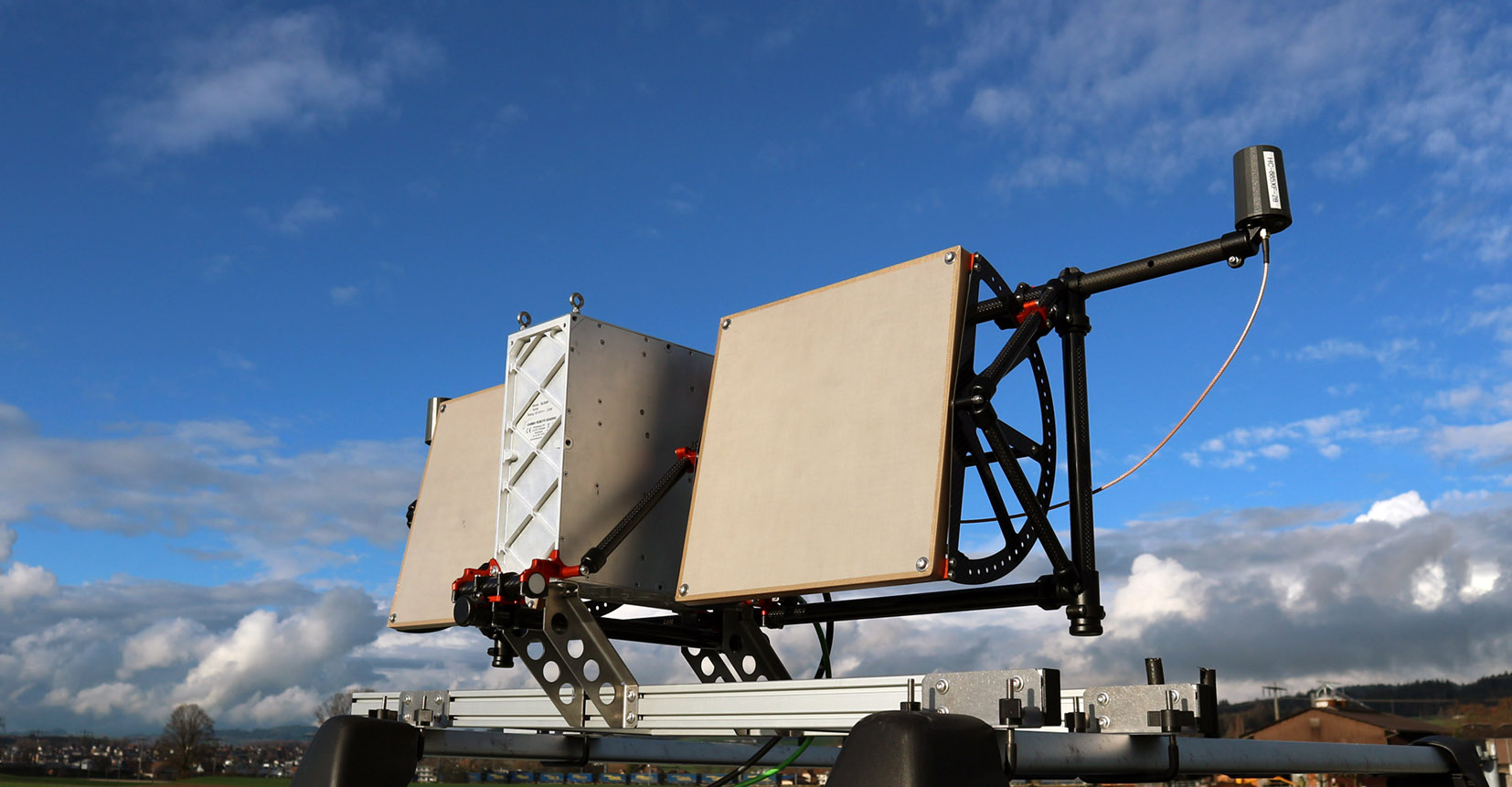The GLSAR is a lightweight, compact FMCW radar system. The radar instrument is designed to acquire high-resolution radar images and to digitize up to four receiver channels simultaneously.
The acquired radar images can be used for polarimetric, and interferometric applications (SAR, InSAR, Pol-SAR, Pol-InSAR) such as imaging, deformation mapping at cm-scale, land-cover classification, digital elevation model (DEM) creation and measurement of surface elevation change.
The system can operate from ground-based (automobile, rail, person), marine, and airborne platforms (UAV, helicopter, aircraft). The compact system is rapidly set up (15 - 20 min) to acquire data in different imaging geometries, even with non-linear tracks.
The integrated GNSS aided inertial navigation system (GNSS/INS) (Honeywell HGuide n500 or Applanix APX-20) records the radar trajectory for the SAR processing with geodetic accuracy and a measurement rate of 20 – 100 Hz. Sub-centimeter positional accuracy can be achieved in post-processing (PPK) of the blended GNSS and INS data combined with data from a geodetic reference GNSS base station.
Optimized for UAV operation by default, the instrument operates with two antennas (TX, RX). The radar can be integrated on airborne platforms and can operate with up to 2 dual-pol receive antennas (Pol-InSAR) or up to 4 single-polarization receive antennas/channels (single-pass InSAR, TomoSAR).
The instrument is available since 2024 and is the successor of the GSL instrument.
SAR imaging and processing (polarimetry, repeat-pass interferometry) is supported by the Time Domain Back Projection (TDBP) processor and the modules ISP/DIFF&GEO of the GAMMA Software.
A list of publications describing specific instrument properties, modes or applications can be found here: Instrument-specific Publications. UAV/car-borne SAR displacement measurements have been presented at the SGM2020.

Frequency: 1.2 - 1.4 GHz
Chirp bandwidth: 200 MHz
Range resolution: 0.75 m
Azimuth resolution: < 0.5 m (at full aperture)
Antenna azimuth beamwidth: 40° (3 dB, one-way)
Antenna size: 30 x 30 cm
PRF: 0 Hz to 10 MHz (nominal: 100 Hz - 4 kHz)
Maximum range > 10 km
4 parallel receiver channels
2 transmit channels (single/alternating)
Total weight: 6.3 kg inkl. antennas and antenna frame
For details see Info Brochure (pdf).